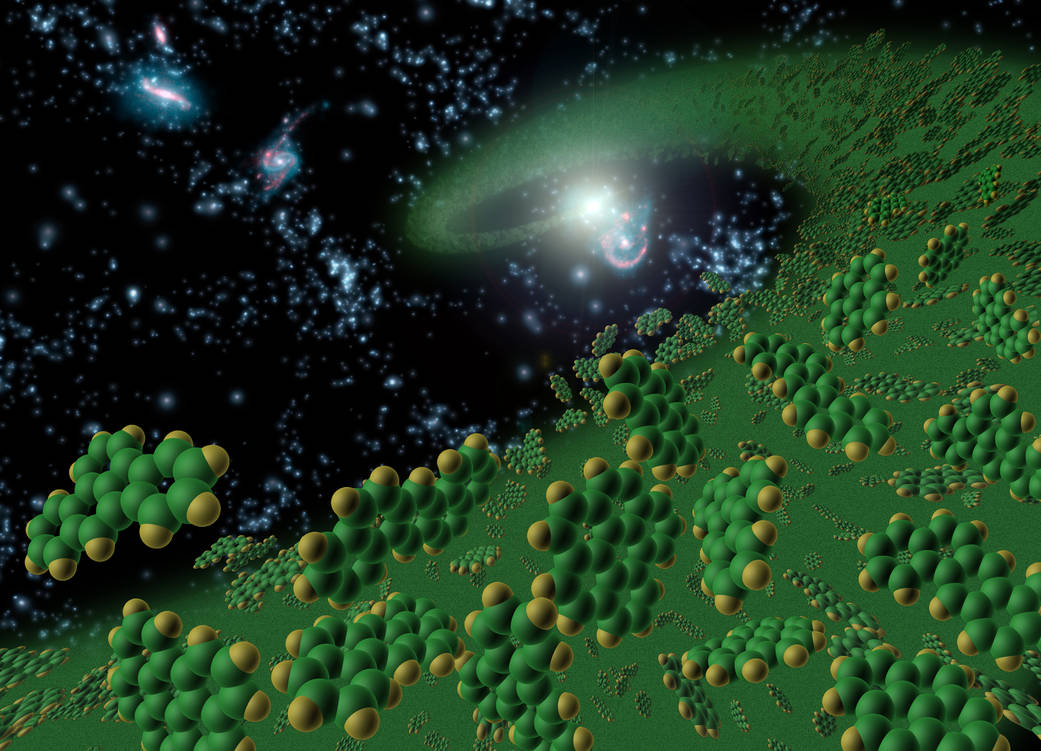Scientists studying early galaxies using the James Webb Space Telescope have announced that dust containing carbon-based molecules is already present in them. In particular, scientists have found polycyclic aromatic hydrocarbons that are complex enough to be considered organic molecules.

Hydrocarbons in the early Universe
When our Universe was no more than 1 billion years old, there were already quite complex carbon-based molecules in it. This is the conclusion reached by a group of scientists working with the James Webb Space Telescope. With its help, they observed those galaxies that acquired gigantic dimensions just a few hundred million years after the Big Bang.
Scientists have determined that there is already a lot of dust in these systems. This announcement cannot be called particularly sensational. But, according to research, a significant part of it is made up of grains of a material resembling graphite or diamond. And this is quite interesting, because at the very beginning there was not enough carbon for their formation.
The first stars in galaxies appeared only 400 million years after the Big Bang. Therefore, they had a little time to turn into supernovae and enrich the cosmos with compounds containing carbon. By cosmic standards, this should have happened very quickly.
One of the most amazing discoveries made by scientists using James Webb spectrographs was polycyclic aromatic hydrocarbons. These molecules, resembling several rings connected together, are complex enough to be sometimes considered organic.
Stars in the early Universe
Polycyclic aromatic hydrocarbons are not uncommon in modern space. However, until now, scientists believed that for a billion years after the Big Bang, there was no free carbon in such an amount in the Universe. And in order for these molecules to form, Wolf-Rayet stars were needed, which would quickly turn into supernovae.
The luminaries in the young Universe were indeed extremely massive and hot. But whether they were similar to Wolf-Rayet stars, meaning whether they generated supernova explosions forming hydrocarbon-rich dust — remains unclear.
New research supposedly confirms this. But astronomers have certain doubts. The fact is that on the spectrogram the peaks corresponding to polycyclic aromatic hydrocarbons and graphite are quite close. And they, while the light is flying towards us for billions of years, can easily move in an unpredictable direction.
Therefore, it is certainly possible that, in fact, such complex molecules in the early galaxies simply did not exist. Although the very fact of the presence of carbon in them cannot but intrigue. James Webb observes earlier dwarf star systems, but the study of dust in them has not yet been conducted.
According to phys.org.
Follow us on Twitter to get the most interesting space news in time
https://twitter.com/ust_magazine

